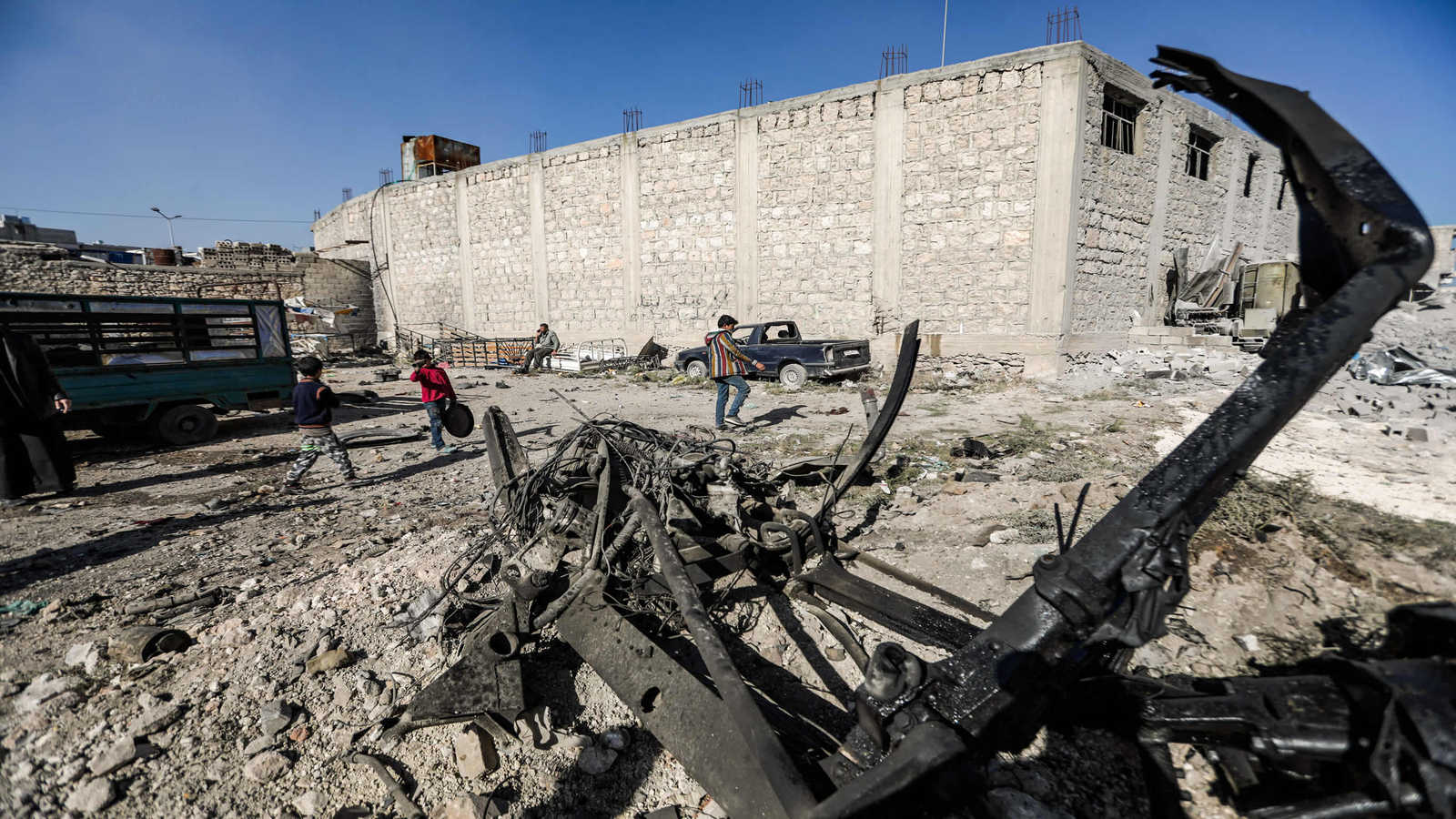
An attempted assassination of a journalist bearing the hallmarks of the Islamic State in the opposition-held city of al-Bab in the countryside of Aleppo has prompted fears about the escalation of IS operations and stirred demands to prosecute terrorist operatives in the area.
Syria TV correspondent and journalist Bahaa al-Halabi survived an assassination attempt Jan. 6 in the Turkish-backed opposition-controlled city of al-Bab in the northeastern countryside of Aleppo. The attempt took place outside Halabi’s home, as masked individuals intercepted his private car and fired their bullets directly at him.
The incident sparked controversy and fear among activists and journalists in the opposition areas in the countryside of Aleppo. Speculations soared about the entity behind this type of operations. Some believe the incident is due to the security chaos that al-Bab and other opposition-controlled areas are experiencing in the countryside of Aleppo. They believe bombings and assassinations are usually carried out by agents of the Syrian regime or the Syrian Democratic Forces (SDF), which both share an interest in perpetuating the security chaos in the region.
Other journalists believe the attempt to assassinate Halabi has the Islamic State’s (IS) fingerprints all over it. IS members excel in this type of assassination. In their view, the incident ushers in the return of the organization to the opposition areas in the countryside of Aleppo through its agents.
On Dec. 12, 2020, journalist Hussein Khattab was assassinated in a similar manner in al-Bab. Two masked individuals shot him in the city center while he was preparing a press report. Opposition police and public security forces have so far been unable to reveal the perpetrators’ identity.
The Union of Syrian Media in Aleppo countryside issued a statement Jan. 6, calling on “all authorities that have set themselves up as trustees and responsible for the region, its security and the protection of its residents to assume their role in maintaining security and deterring terrorist cells.”
“We will not stand by idly while we watch our safe areas turn into a hotbed of terrorism,” it warned.
Al-Monitor met President of the Union of Syrian Media Saad al-Saad, who said, “The attempt to assassinate Halabi and the assassination of Khattab reaped terror in the hearts of journalists and activists in the opposition areas. All of us could be a target for terrorism if the security situation is not controlled and the agents working in favor of the terrorist organizations are not prosecuted. I do not rule out that IS could be the culprit, but the regime or SDF may be behind these operations as well. This matter is open to many speculations since the opposition police forces have so far been unable to determine the identity or affiliation of the perpetrators.”
Galal Talawi, journalist and member of the Union of Syrian Media, told Al-Monitor that opposition security and military institutions must intensify their efforts in managing the security situation in al-Bab and Aleppo’s countryside. “Terrorists could expand their activities in the coming period if they are not prosecuted and hit with an iron fist,” he said.
Fears of an IS comeback in the opposition-controlled areas in the countryside of Aleppo through operations carried out by IS cell members seem justified right now.
IS is witnessing a revival and has spread in the areas of the Syrian desert (Badia). Its fighters are constantly attacking the regime forces and allied militias. IS has been also targeting SDF in the areas it controls in northeastern Syria, and will naturally try to penetrate and target opposition-controlled areas in northwestern Syria. What’s more, IS claimed responsibility for previous assassinations in al-Bab.
Of note, IS claimed about 600 attacks in Syria during 2020, most of them in eastern Syria. According to a Jan. 6 statement published by the IS-affiliated Amaq news agency, 593 attacks were carried out in Syria during 2020. IS stated that its operations killed 1,327 persons and wounded 901 individuals affiliated with the SDF, 407 Syrian regime forces and 19 fighters from various opposition factions.
Most of IS’ attacks and operations concentrated in Deir ez-Zor, where IS said it conducted 389 attacks, followed by 59 in Raqqa, 38 in Homs, 39 in Hasakah, 36 in Aleppo and 29 in Daraa. According to the statement, the attacks destroyed and damaged 292 vehicles, including 172 in Deir ez-Zor, 51 in Raqqa and 25 in Homs. The Amaq statement noted that 256 of the attacks were carried out with explosive devices, 191 were assassinations and 123 clashes.
Meanwhile, journalist Majed Abdel Noor argued that recently, through its security cells, IS has penetrated deep into the city of al-Bab. He told Al-Monitor, “IS cells are carrying out operations in broad daylight. The problem is the security failure and shortcomings shown by the opposition’s security institutions. These instructions ought to exert all possible efforts and tap on any capabilities to eradicate these criminals.”
Abdel Noor noted, “The eradication of these cells must begin as soon as possible, otherwise we will soon wake up to see IS expanding tremendously. Then the available security solutions will not be enough.”
He added that the method of these assassinations provide several signs about the perpetrator. “IS is the most capable opponent to penetrate our regions so easily. All opponent parties — including the SDF and the Syrian regime — are involved in the terrorist operations carried out in the liberated area. However, operations of this kind — targeting journalists — bear the hallmarks of IS cells,” he concluded.
 Eurasia Press & News
Eurasia Press & News

